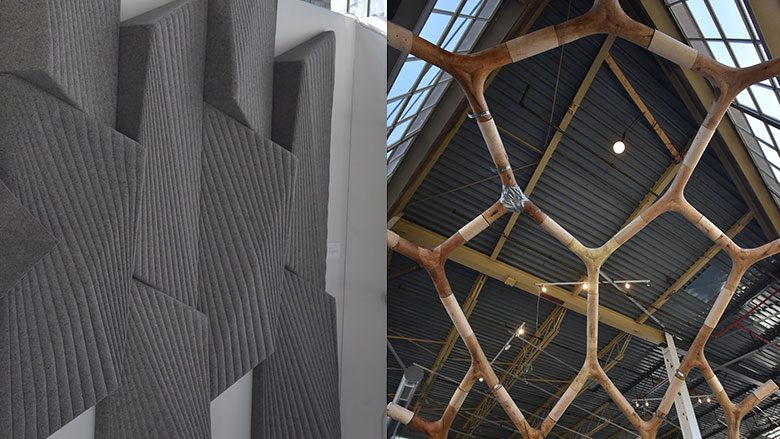Three teams of Taubman College faculty are recipients of 2018 R+D Awards. Presented by ARCHITECT magazine, the annual R+D Awards program honors the research and technologies that have advanced the profession at every scale—from design strategies and building products to fabrication methods, installations, software, and materials.
Associate Professor Steven Mankouche, Lecturer Kasey Vliet, and Professor Peter von Bülow received a citation for their submission, “Limb, a Fantastical Take on Timber Construction,” which leverages the inherent strength of tree crotches to create 3D structures. “I have been looking at pre-electric technologies for a while, and what impressed me was the ways that people managed to be very innovative with the materials they had at hand,” says Mankouche, who talked more about the project in a the video below. Because tree crotches—the connection points between a trunk and a limb, or between a main limb and an offshoot—are a single integrated piece, they are stronger than a joint that forces together disparate vertical and horizontal members. Mankouche, Vliet, and von Bülow wondered whether they had a place in 21st-century design, and found that while every crotch is a little different, most fall within a narrow range of angles, particularly after being milled. Using the team’s database of the most common angles, architects can collect a set of tree crotches and input their angles, and an algorithm will crunch the values into an optimal arrangement for whatever structure the user wants to build.
Assistant Professors Tsz Yan Ng and Wesley McGee and Lecturer Asa Peller received a citation for their submission, “Robotic Needle Felting Stitches New Possibilities.” Ng, McGee, and Peller considered how the traditional process of needle felting—where a barbed needle pushes through layers of fabric and, as it pulls back, entwines the threads and thus the layers to unite the plies—could be integrated with robotic manufacturing to create a more efficient way to bind thermoplastic textiles. The result, which the team developed by using Taubman College’s Digital Fabrication Lab, is an additive process somewhat analogous to 3D printing: A robotic head equipped with a needle is fed a strip of felt that it then lays out and attaches onto a foam substrate, as can be seen in the below video. “Integration into a robotic process not only enables precision and speed in manufacturing but also extends needle felting as a 3D process, especially for surfaces with complex geometries,” the team wrote in their submission.
Assistant Professor Sean Ahlquist earned an honorable mention for his submission, “Social Sensory Architectures Offers Comfort and Healing Through Design,” which explores the impact of architecture on autism and sensory processing disorder. Inspired by his daughter, who is autistic and non-verbal, Ahlquist explores the interplay and distinction between textiles and structures by using an industrial CNC-knitting machine to create complicated play environments. Though aided by research, Ahlquist designs the undulating, funicular forms intuitively, guided by a sense of what will satisfy “the diversity of multisensory experiences that the audience of children with autism commands,” he says. His goal is to blur the line between fabric and architecture: “It’s about connecting two worlds, two realms of expertise.” He frequently collaborates with other University of Michigan units, including aerospace engineering, structural engineering, and material science programs. This project involved U-M faculty in psychiatry and kinesiology. See Ahlquist explain his work in the following video.
For more about the R+D Awards: architectmagazine.com/topic/the-2018-r-d-awards





